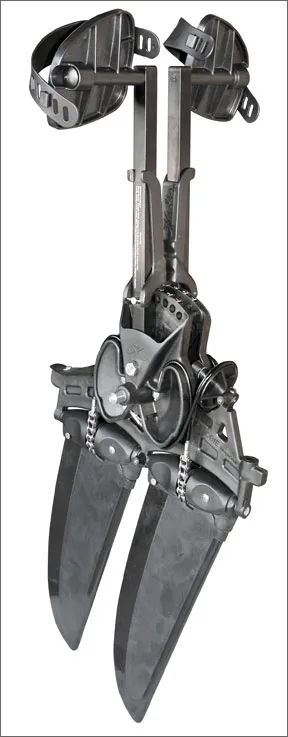Alright, we know what youre thinking: A pedal boat in Practical Sailor? Thats what we thought, too, when Hobie sent us the Mirage i12s in response to our search for an inflatable kayak that could serve as a secondary tender for a cruising sailboat.

Then we took it for a spin.
The 12-foot PVC hull has overlapping glued and welded seams and a slick, abrasion-resistant bottom. The chambers are inflated to a modest 3 to 5 psi (compared to the 6.5 psi for the Walker Bay Airex reviewed in July 2008), which limits stiffness. For the tropics, PS prefers Hypalon to PVC, but that would add weight and push the price up. The hull carries a two-year warranty, not enough for an $1,800 boat (MSRP), in our opinion. Five years would be our minimum.
The stern of the boat has bungee cords and an area for lashing down a dry bag, tackle box, or snorkel gear, but potential for provisioning runs is limited. A compartment in the bow will hold small items. To our chagrin, the space was too small to easily stow the hand pump.
What sets this boat apart is the drive system. This is not your Camp Hiawatha paddle boat.
The Mirage Drive was developed by Hobies Gregg Ketterman. In the late 1980s, Ketterman helped design Dennis Connors Stars and Stripes catamaran. In the early 90s, he designed and built the foil-boat Longshot, which went on to set a speed sailing record of 43.55 knots. (On March 30 this year, Macquarie Innovationexceeded 50 knots.) Next, Ketterman came up with the Hobie TriFoiler, capable of speeds of 25-plus knots. Hobie stopped making the boat, but it still has a loyal following.

“It has a very narrow wind range,” explained Ketterman. “Too little wind, and it is no fun. Too much, and its scary.”
Videos on the Hobie website, www.hobiecat.com/kayaking/, explain the Mirage drive better than words and pictures convey. Essentially, it uses the drivers leg muscles to propel large, fin-shaped blades side-to-side across the bottom of the kayak. As the fins sweep, they flex, so that they repeatedly present positive camber to generate lift, just like a leeward side of a sail or the top of an airplane wing. The complex hydrodynamics and variables at work (degree of fin flex among them) make it nearly impossible to apply a velocity prediction program, according to Ketterman.
During our trial, about 3 knots in flat water seemed to be a leisurely cruising speed. The real advantages of the system over a conventional paddle kayak are many, particularly for the novice: maintaining a decent clip requires less effort; thrust is impacted less by wave motion; the paddler presents less wind resistance; and your hands remain free for carrying out other tasks (like fishing, holding a drink, or applying sunscreen). Steering is simple: a small dial on the port chamber controls the rudder. In shallow water, the blades fold up against the hull by pushing one pedal all the way forward.
The major drawbacks? You can’t pedal backward or in shallow water (a clip-on paddle is included to handle these chores), and the chain-driven blades require more care and maintenance than a paddle.
A sail is an option, although the rig our Hobie dealer provided lacked the essential stays for a proper test. When under sail, both drive foils can be put down to act like a centerboard. For more power, Hobie offers Turbo fins, which we recommend.
Size could be a problem. The boat is meant to pack into a rolling 36x24x15-inch bag (with wheels too small for wooden docks, but fine for airports) and weighs about 75 pounds including everything. A double hernia was the only real obstacle to stowing the boat beneath the cockpit of our 1974 Catalina 22, Jelly. (The pop-top paid off.) Hobie recently introduced a more compact 9-footer. For couples and families, there is also a 14-foot tandem boat available.
Bottom line: The Hobie Mirage i12s adds a new dimension to cruising, particularly for the avid fisherman. Some hull details could be better executed, and we would like a Hypalon option, but you can’t have everything. If weight and price are chief concerns, Walker Bays Airex line is still in the game.



































